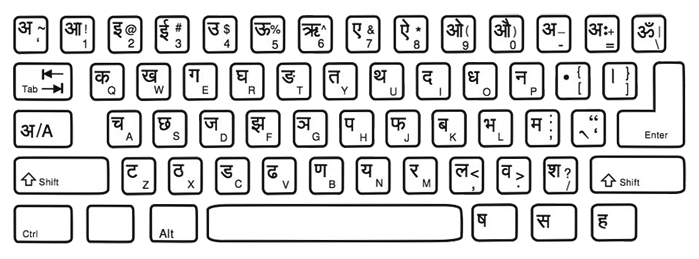
This topic might not be of interest to everyone, so feel free to tune out in just a moment if the next sentence doesn’t sound cool. Brahmi Computing has announced their new concept in Indian keyboard layout and functionality!
This is a surprisingly exciting new development that could change the way more than a billion* people interface with their computers. This new layout is ordered fundamentally differently from the current, established, layout. The creators believe that by rearranging the keys (essentially alphabetically) will allow users to learn to easier and quicker.

The new layout by Brahmi Computing. (Learn more about it here.) Dead link :(

The current standard Hindi keyboard layout (Image source)
The question is: which is more important, an easy to memorize layout, or one that is organized by character frequency? Shouldn’t the most used keys be in the easiest-to-access locations, whereas the uncommon ones are tucked away more? The common QWERTY keyboard (invented in the early 1870s) doesn’t have much logic yet there aren’t many complaints. August Dvorak tried to promote his new, simplified layout – the Dvorak keyboard – in 1936 but met with little success. There are pros and cons to each system, but thanks to the Dvorak’s most common characters all on the home row, typists can peck away at 400% the speed as on the QWERTY version. However, maybe this “character popularity” system is not as relevant for all languages or for all users.
Aside from the logical layout of the consonants, there are other notable new features of the Brahmi Computing keyboard. The vowels are all together in the top row along with the numerals. Also, it is quick and easy to switch between English and any Indian language by pressing the Caps Lock key.
You can contact them to make a pre-order, but there is no word yet when they will be available, for how much, or if they are building drivers for use with different operating systems – they are also building their own computer and OS it seems!
Here is a video where you can see the keyboard in action with commentary from Mahesh Jayachandra.
Thanks for the original report posted by geotypografika.com.
*Actual current computer users is substantially lower than this figure, but the market is vast.





